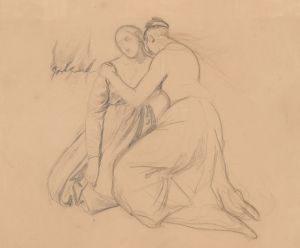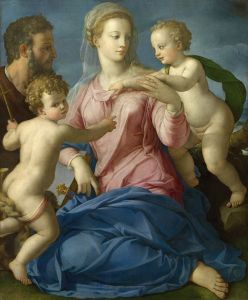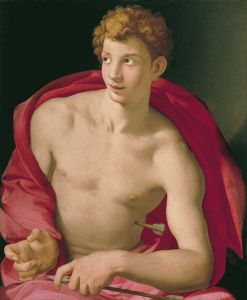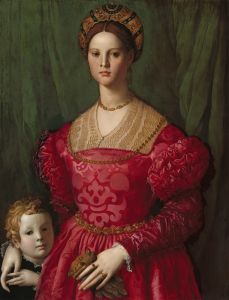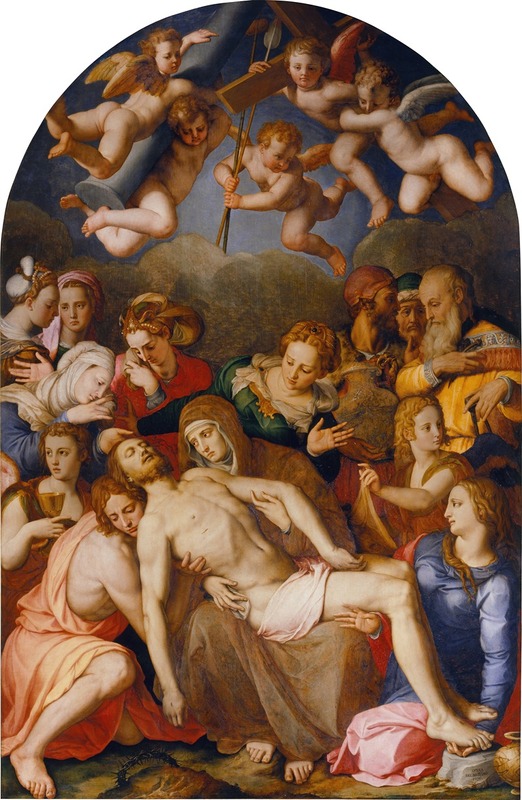
Deposition Of Christ
A hand-painted replica of Agnolo Bronzino’s masterpiece Deposition Of Christ, meticulously crafted by professional artists to capture the true essence of the original. Each piece is created with museum-quality canvas and rare mineral pigments, carefully painted by experienced artists with delicate brushstrokes and rich, layered colors to perfectly recreate the texture of the original artwork. Unlike machine-printed reproductions, this hand-painted version brings the painting to life, infused with the artist’s emotions and skill in every stroke. Whether for personal collection or home decoration, it instantly elevates the artistic atmosphere of any space.
Agnolo Bronzino, an eminent Italian Mannerist painter, created the artwork known as "Deposition of Christ" around 1540-1545. This painting is a significant example of Bronzino's mastery in the Mannerist style, which is characterized by its artificial elegance, elongated forms, and sophisticated composition. Bronzino was a prominent figure in the Florentine art scene and served as the court painter for the Medici family, which greatly influenced his artistic output.
The "Deposition of Christ" depicts the moment when Jesus Christ is taken down from the cross, a common theme in Christian art that illustrates the sorrow and solemnity of Christ's followers after his crucifixion. Bronzino's interpretation of this scene is notable for its dramatic composition and the emotional intensity conveyed through the figures' expressions and gestures.
In this painting, Bronzino employs a complex arrangement of figures, each meticulously rendered with a focus on anatomical precision and elegant poses. The figures are arranged in a way that guides the viewer's eye through the composition, creating a sense of movement and depth. The use of vibrant colors and intricate details further enhances the visual impact of the scene.
Bronzino's "Deposition of Christ" reflects his skillful use of chiaroscuro, a technique that contrasts light and shadow to create a three-dimensional effect. This technique is evident in the way light falls on the figures, highlighting their forms and adding to the overall dramatic effect of the painting. The artist's attention to detail is also apparent in the depiction of the fabrics and textures, which are rendered with a high degree of realism.
The emotional intensity of the scene is conveyed through the expressions and body language of the figures. The Virgin Mary, often a central figure in depictions of the Deposition, is shown with a sorrowful expression, her grief palpable as she gazes upon her son. Other figures, such as Mary Magdalene and John the Evangelist, are also depicted with expressions of mourning and despair, adding to the overall sense of tragedy and loss.
Bronzino's work is often associated with the intellectual and cultural milieu of the Medici court, and his paintings reflect the sophisticated tastes and interests of his patrons. The "Deposition of Christ" is no exception, showcasing Bronzino's ability to blend religious themes with the refined aesthetic sensibilities of the time.
This painting is housed in the Musée des Beaux-Arts in Besançon, France, where it continues to be admired for its artistic excellence and emotional depth. As a testament to Bronzino's skill and the enduring appeal of Mannerist art, the "Deposition of Christ" remains an important work for both art historians and enthusiasts alike.





